Last Updated on March 13, 2025 by Packoi Team
Printing is a significant part of our modern world. Whether it’s the labels on your favorite products, the pages of a book you’re reading, or the billboard you pass on your way to work, printing is everywhere.
However, what many people may not realize is that not all printing is created equal when it comes to its impact on the environment.
This is where the concepts of soy ink and soy ink printing come into play. In this comprehensive guide, we will explore the world of soy ink, exploring its benefits, how it’s made, and much more. Let’s start!

What Is Soy-Based Ink?
So, let’s talk about soy-based ink and why it’s a fantastic choice.
Back in the 1970s, there was a bit of a problem. We were running low on the oil needed to make traditional inks, which are based on petroleum. This created a real challenge for the printing industry. They needed to find a more sustainable way to keep the presses running smoothly.
They put their thinking caps on and came up with soy-based ink. It’s like a superhero made from vegetable oil!
The goal was to tackle a couple of big issues: first, to make the printing workplace safer and healthier by reducing the use of chemicals that can evaporate and react with sunlight in not-so-friendly ways. And second, to be kinder to the environment.
Fast forward to the late 1980s, and soy-based ink started making its mark. When an ink contains at least 20% soy oil by volume, we can call it soy-based ink. This clever swap of petroleum oil for soy oil in ink cartridges marked the beginning of a more eco-friendly era in the printing world.
How Soy Ink Is Created
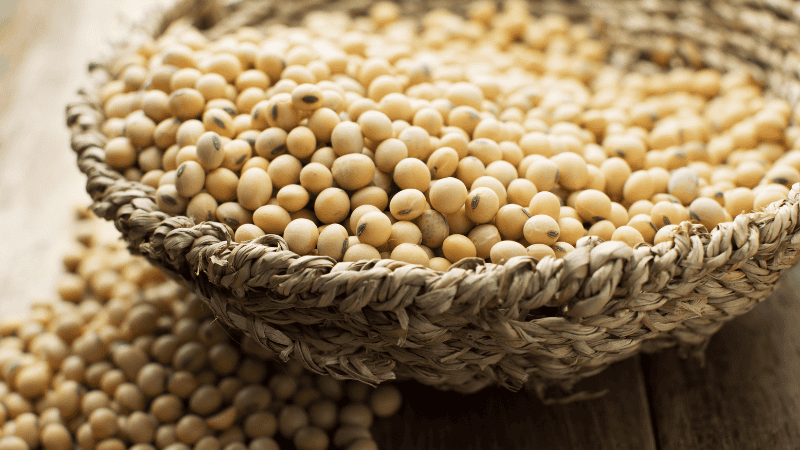
Let’s dive into the fascinating process of how soy-based ink, our eco-friendly printing superhero, comes to life. It all starts with soybeans, those little powerhouses that not only make soy milk and tofu but also create ink that’s good for the planet.
These humble legumes are not only low-cost but also have some impressive environmental credentials. As soybeans grow, they pull carbon dioxide from the atmosphere, helping combat climate change. What’s more, they don’t require a ton of water for irrigation, making them an even more sustainable choice.
Now, let’s break down the process step by step:
Step 1: Cleaning and Flaking
Before anything else, the soybeans need a good cleaning. This ensures that we’re working with the purest soybean material possible. Once they’re spick and span, the soybeans are flaked. Think of this as turning whole soybeans into smaller, manageable pieces.
Step 2: Processing into Oil
Next up, we transform those soybean flakes into oil. This is where the magic starts. The soybean oil is extracted and refined, making it ready for ink production. But hold on; we’re not done yet.
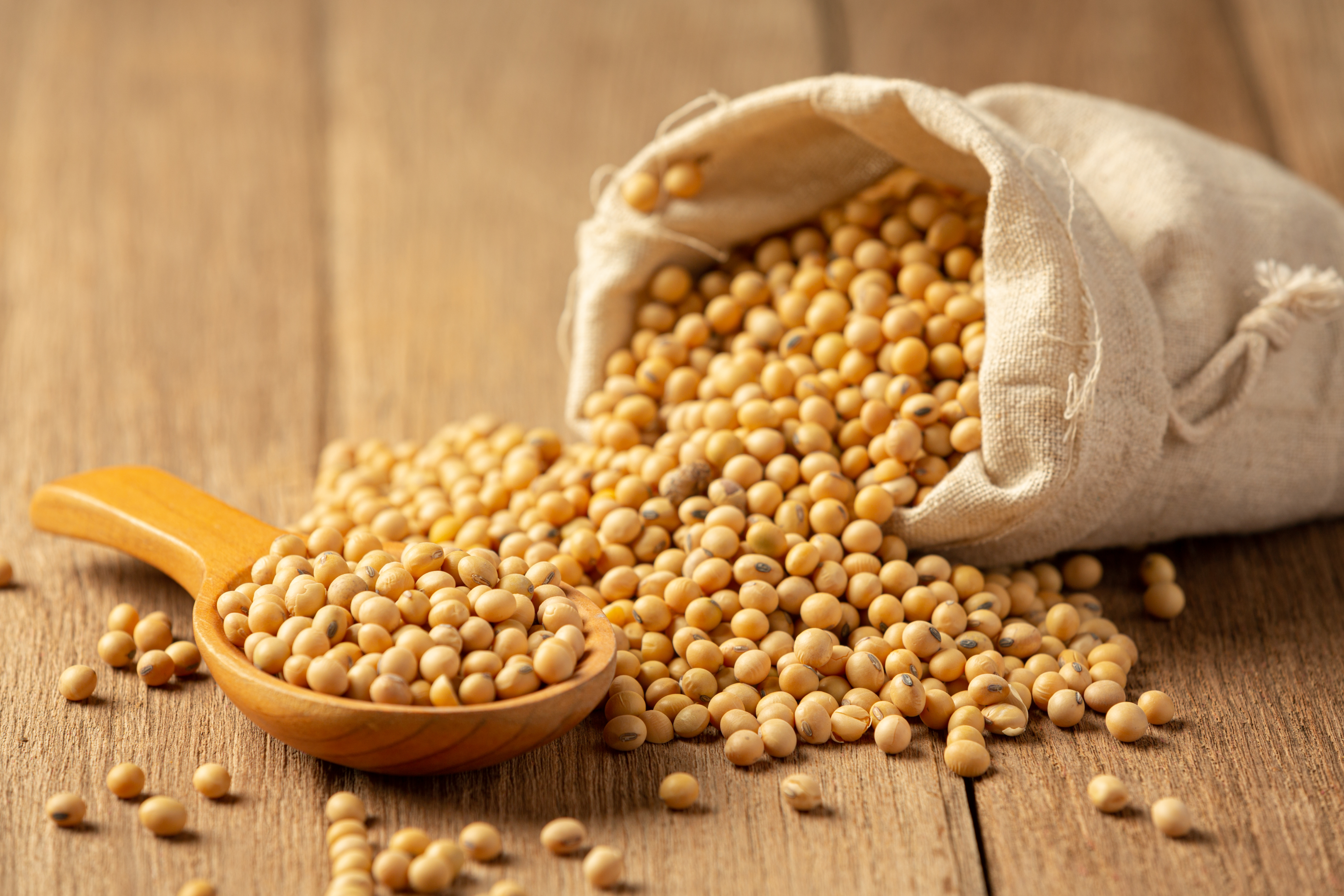
Step 3: Refined and Cooked
After the extraction process, the soybean oil goes through refinement to ensure it meets the high-quality standards we expect from ink. It’s like giving it a little spa treatment. Once it’s refined, the oil is cooked up. This step involves heating it to the right temperature to get it just perfect for the ink-making process.
Step 4: Mixing in Pigments, Resins, and Waxes
Here comes the fun part—adding color and character to our ink. To create those vibrant and eye-catching colors you see in your prints, pigments are mixed into the soybean oil. But we’re not stopping there; ink needs a bit more substance.
Resins and waxes are also added to the mix. This combination of soybean oil, pigments, resins, and waxes results in a high-quality soy-based ink that not only looks great but also performs superbly.
The Final Product
And there you have it—soy-based ink, ready to bring your prints to life. This ink is not only eco-friendly but also impressively low in volatile organic compounds (VOCs). Why is this important? Well, VOCs can contribute to air pollution, so having ink that keeps them in check is a win for both your prints and the environment.

The Pros and Cons:
Soy-based ink has been making waves in the printing industry as a more environmentally friendly alternative to traditional petroleum-based inks. But like any product, it comes with its own set of pros and cons. Let’s take a closer look at both sides of the soy-based ink coin.
Pros of Soy-Based Ink:
1. Sustainability:
One of the standout benefits of soy-based ink is its sustainability. This ink is derived from soybean oil, a renewable resource. Unlike petroleum-based inks that rely on finite fossil fuels, soy-based ink taps into a resource that can be replenished year after year.
Soybeans are grown as crops, and their cultivation supports a circular and eco-friendly ink production process.
In addition, soybean crops have another green trick up their sleeve: they actively remove carbon dioxide from the atmosphere as they grow. This helps mitigate the effects of climate change, making soy-based ink an ally in the fight against global warming.
2. Durability:
Soy-based ink doesn’t just have green credentials; it’s also tough. When you print with soy ink, your materials stay vibrant and readable for a long time.

This durability means your prints are less likely to fade or deteriorate, even when exposed to sunlight, moisture, or rough handling. So, whether it’s a brochure, poster, or packaging, your message remains clear and vivid.
3. Color Vibrancy:
Printing is all about visuals, and soy-based ink doesn’t disappoint in this department. It produces vibrant, eye-catching colors that make your prints pop. The ink’s ability to hold color well results in striking and visually appealing printed materials.
4. Versatility:
Soy-based ink is a versatile player in the printing world. It can work seamlessly with various printing techniques, including offset, flexographic, and digital printing. Whether you’re producing marketing materials, labels, or packaging, soy-based inks adapt to your needs.
It’s also compatible with different substrates, such as coated paper, uncoated paper, and even textiles. This versatility means you have more creative freedom when choosing printing methods and materials.
5. Non-Toxic:
Safety is a top priority, both for the environment and the people handling the ink. Soy-based ink is non-toxic and emits fewer volatile organic compounds (VOCs) compared to traditional inks. Fewer VOCs mean better indoor air quality and a healthier working environment for those in the printing industry.
Ready to Get Custom Packaging for Your Business?
start with a low minimum order quantity
Cons of Soy-Based Inks:
1. Printing Quality:
While soy-based ink generally delivers excellent results, it may not be the perfect fit for every single printing job. Some specialized printing methods or substrates might require different inks for optimal results. It’s essential to match the ink to the specific task at hand to ensure the best printing quality.
2. Environmental Considerations:
While soy-based ink is a significant step toward sustainability, the overall environmental impact of your printing project depends on several factors beyond just the ink itself.
For instance, the type of paper you use, the efficiency of your printing press, the VOCs emitted, and how you manage waste all play a role in determining the environmental footprint of your project.
So, while soy-based inks are a green choice with no negative impact, they’re just one piece of the larger puzzle of eco-friendly printing.
3. Cost:
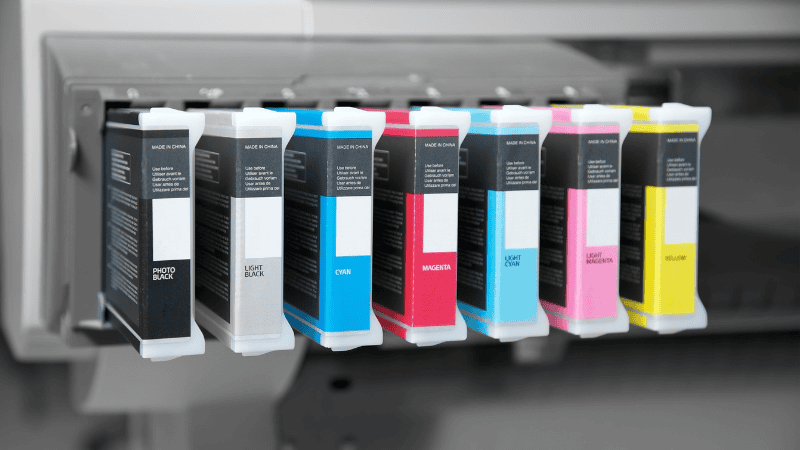
Let’s talk budget. Soy-based inks may come with a slightly higher upfront cost compared to traditional inks. This cost difference can be attributed to the production process and the use of renewable resources. However, it’s essential to consider the bigger picture.
The improved durability of soy-based ink, along with reduced waste and a lower environmental footprint, can often offset that initial investment. So, while there might be a minor cost increase, the long-term benefits can make it a financially wise choice.
The Difference between Soy Inks and Regular Inks
Now, you must be wondering what sets soy ink apart from petroleum-based ink. We’ll talk about sustainability, durability, color, versatility, and how friendly they are for you and the planet.
1. Sustainability:
- Soy Ink: We’ve already established that soy inks are like the eco-hero of the ink world. It’s made from soybean oil, which is something we can grow again and again. This is great news for our planet because we don’t have to rely on limited fossil fuels, which is what regular ink is made from. What’s more, soybean crops actually help fight climate change by sucking up carbon dioxide from the air as they grow. So, using soy ink is like giving a big green thumbs-up to Mother Earth.
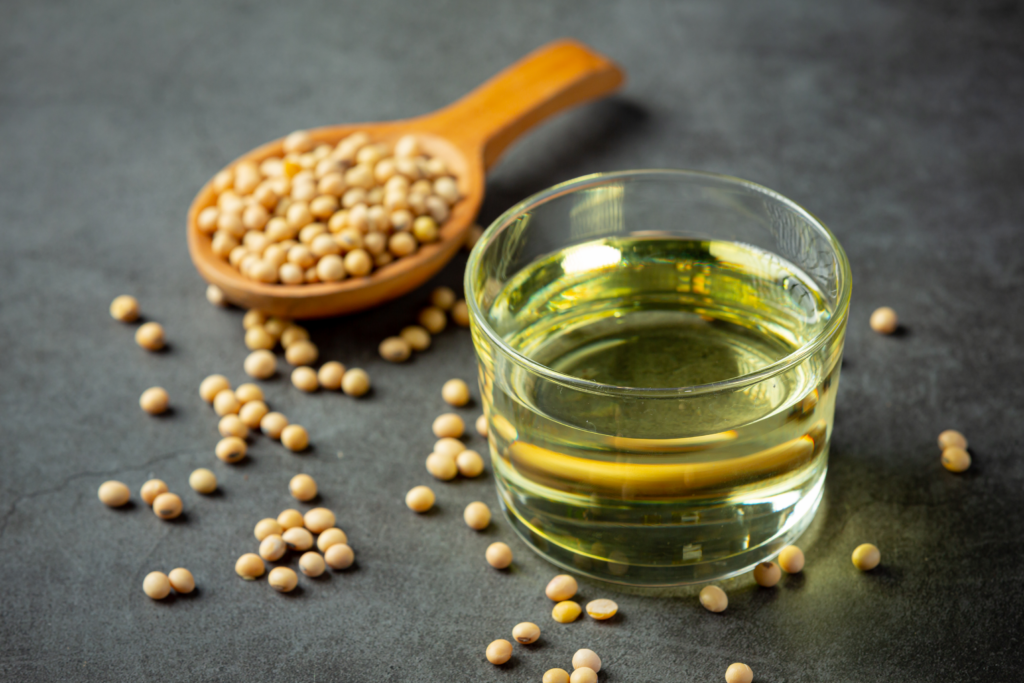
- Regular Ink: Petroleum ink and other inks, on the other hand, rely on non-renewable resources, which aren’t so sustainable. Petroleum, for instance, is one of the non-renewable resources, which means it’ll run out one day. Plus, the process of getting petroleum out of the ground can have a negative environmental impact. So, when it comes to sustainability, inks based on vegetable oils take the cake.
2. Durability:
- Soy Ink: Have you ever had a printed page that faded away like a disappearing act? Well, this might have happened due to the volatile components of solvent-based inks. The raw materials of vegetable-based inks won’t do that to you. They’re tough and hang in there, even when things get rough. Whether your prints face rain, shine, or a bit of handling, they stay vibrant and legible. So, if you want your prints to look sharp and last a long time, soy ink is your go-to.
- Regular Ink: Petroleum-based ink can be a bit more fragile. Over time, it might fade, especially when exposed to sunlight or moisture. So, if durability is high on your list, soy ink is the winner here, too.
3. Color:
- Soy Ink: When it comes to making your prints look fabulous, these eco-friendly inks don’t hold back. They give you those eye-catching colors that grab your attention. The best part? Their ink pigments stay vivid and sharp, making your prints stand out.
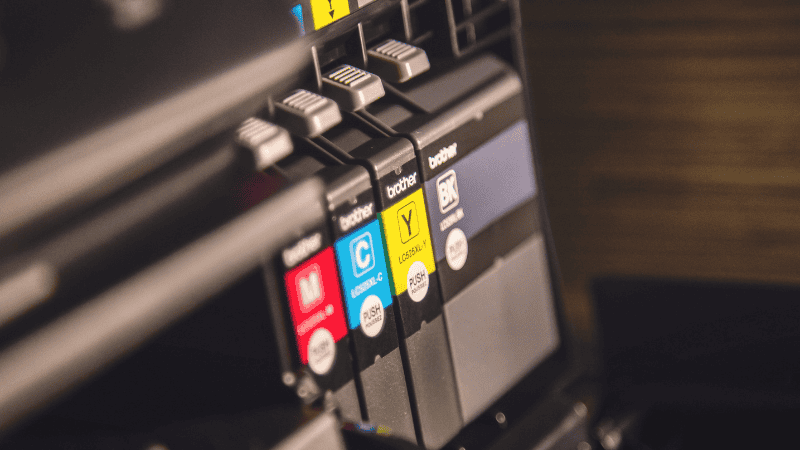
- Regular Ink: Petroleum or water-based ink can also deliver beautiful colors; solvent ink is more effective than water-based ink, but soy ink tends to hold them better and longer. So, if you want prints that pop and keep popping, soy ink is your best bet.
4. Versatility:
- Soy Ink: Vegetable inks are like a friendly neighbor who gets along with everyone. It can work smoothly with various printing methods like offset, flexographic, and digital printing. Whether you’re printing brochures, labels, or packaging, soy ink is up for the task. It also goes well with different materials, from glossy paper to recycled stuff and even textiles. So, if you love options, eco-friendly inks have got your back.
- Regular Ink: Traditional ink is versatile, too, but soy ink’s adaptability is one of its strong suits. It doesn’t just play nice; it plays nice with everyone and everything.
5. Non-Toxic:

- Soy Ink: Printing should be safe for the folks doing it, right? Soy ink gets that. It’s non-toxic, which means it won’t harm you or the environment. Plus, it’s a champ at keeping volatile organic compounds (VOCs) in check. VOCs can be a real nuisance when they evaporate into the air, but soy ink emits fewer of them. Cleaner air in the printing space? It sounds good to us.
- Petroleum Inks: Petroleum-based inks aren’t necessarily toxic but can contain more VOCs. So, when it comes to creating a healthier work environment with fewer emissions, soy-based printing inks win.
5 Factors When Selecting Soy-Based Inks for Printing
Now, we’ll dive into the basics of picking the right soy printing ink for your green printing needs. There are some key factors to consider; let’s break them down in plain and simple terms.
1. Printing Technique
Think of the printing technique as the “how” of printing. Are you using an offset press, a digital printer, or something else? Your choice should match your printing method, like a puzzle piece fitting perfectly.

For example, soy printing ink plays well with a wide range of techniques, from the classic offset to modern digital printing. So, if you have a specific printing method in mind, make sure your soy ink can dance to the same tune.
2. Substrate
The substrate is the fancy word for what you’re printing on. It could be paper, cardboard, fabric, or even something more exotic. Soy ink can handle various substrates, but it’s crucial to pick the right one to get the best results.
If you’re printing on coated paper for that glossy finish, soy ink can handle it. On the other hand, if you’re going for the rustic look of uncoated paper, soy ink is up for the task, too. So, just match your soy ink to your substrate, and you’re golden.
3. Printing Quality
Of course, you want your prints to look top-notch. Soy ink delivers vibrant colors, but remember that printing quality isn’t just about ink. Factors like the printer itself, the design, and even the paper’s quality play a role.
However, soy ink does hold colors well, so it’s a step in the right direction for stunning prints. Just ensure your overall printing setup is up to snuff for that “wow” factor.

4. Environmental Considerations
If you’re going the soy-ink route, chances are you’re into green printing. But don’t forget, the environment’s well-being isn’t just about ink. It’s also about how you handle waste, your choice of paper, and the efficiency of your printing press.
Soy ink reduces your carbon footprint compared to traditional inks because it’s made from renewable soybean oil. Consider the bigger picture and make eco-friendly choices all around.
5. Cost
Last but not least, let’s talk budget. Soy ink might have a slightly higher price tag upfront compared to regular ink. However, it’s essential to look at the long game. Soy ink tends to last longer, create less waste, and be better for the environment, which can often offset that initial investment.
There might be a minor cost increase, but in the grand scheme of things, it can be a smart financial move.
Ready to Get Custom Packaging for Your Business?
start with a low minimum order quantity
Tips for Customized Soy Ink High-Volume Printing Projects
Let’s talk about how to tackle those big printing projects with customized soy ink. Whether you’re printing tons of brochures, catalogs, or any high-volume job, a few tips can make your life easier.
1. Assess Your Printing Needs
Before you dive headfirst into a high-volume printing project, take a step back and figure out what you really need. How many copies are you looking to print? What’s the size of your materials? What kind of paper or substrate are you using? Knowing these details will help you plan better.
For example, if you’re printing a massive batch of catalogs, knowing the exact quantity and size will help you order the right amount of soy ink and paper. You won’t want to run out of ink halfway through the job!
2. Choose the Right Printer
Your choice of printer is like your partner for this printing adventure. Make sure you pick one that’s up to the task. Look for a printer that has experience with high-volume jobs and knows the ins and outs of using soy ink.

Also, check if your printer has the right equipment for your project. Different printers have different capabilities, so find one that matches your needs. Don’t be afraid to ask questions and get recommendations; your printer should be your ally in creating top-notch prints.
3. Consider Eco-Friendly Options
If you’re going for soy ink, you’re already on the eco-friendly path. But don’t stop there. Think about other ways to reduce your environmental footprint during your high-volume printing project.
For instance, choose recycled paper or other sustainable substrates. These materials are not only kinder to the planet but also work well with soy ink. Also, explore double-sided printing to save paper and reduce waste.
Remember, being eco-conscious isn’t just a one-time thing; it’s a mindset. So, make choices that align with your commitment to a greener world throughout your project.
The Popular Industry of Soy Ink Printing
Now, let’s discuss how soy ink printing has found its place in different industries, from packaging to publishing to advertising to apparel.
1. Packaging

In the packaging industry, soy ink has gained prominence due to its ability to create eye-catching designs while remaining environmentally friendly. Whether it’s a luxurious box for a high-end product or an eco-conscious container for everyday goods, it contributes to attractive and sustainable packaging.
Soy ink is suitable for printing on a variety of materials, such as cardboard, paper, and fabric, making it a versatile choice for packaging needs.
2. Printing
The printing world has also significantly benefited from soy ink, as it plays a significant role in catalogs, brochures, books, and magazines, enhancing the visual appeal of these materials.

Its capacity to retain vibrant colors and adapt to different printing techniques, including offset and digital printing, makes it a valuable choice for creating high-quality printed materials.
Whether you’re flipping through the pages of a magazine or browsing a catalog, there’s a good chance you’re witnessing its effectiveness.
3. Publishing
The publishing industry relies on ink transfer to bring words to life, and soy ink has become a prominent player in this field. Whether it’s books, newspapers, or other printed publications, it not only adds vibrancy to text and images but also contributes to the industry’s overall sustainability efforts.
Reading a book printed using soy ink means engaging with a product that has a reduced carbon footprint.
4. Advertising

In advertising, soy ink is instrumental in creating attention-grabbing visuals.
Whether it’s billboards, posters, or banners, their ability to maintain color quality even when exposed to various elements ensures that your message remains sharp and impactful. Next time you encounter a striking billboard or poster, remember that it played a role in making it memorable.
5. Apparel
Beyond traditional printing applications, soy ink has found its way into the fashion industry, particularly in apparel printing. Custom t-shirts, tote bags, and other textiles benefit from its versatility, allowing intricate and colorful designs to be printed on fabric.
Beyond its aesthetic appeal, its eco-friendly properties make it a preferred choice among individuals who value both fashion and environmental responsibility.
Ready to Get Custom Packaging for Your Business?
start with a low minimum order quantity
Soy Ink’s Compatibility with Printing Substrates
Soy ink’s ability to perform consistently on a diverse range of substrates makes it a valuable tool in the printing world. It means that no matter the material you’re working with, you can rely on soy ink to produce high-quality, environmentally friendly prints.
This versatility opens up possibilities for a wide range of industries and printing applications, making soy ink a choice that effortlessly combines quality and sustainability. Here is a list of substrates soy ink is compatible with:
1. Coated Paper
Soy ink is a natural fit for coated paper. This is where it shines, delivering sharp, vibrant colors that make glossy magazines and brochures look stunning. It’s like the finishing touch that adds a touch of elegance.
2. Uncoated Paper
If you prefer a more natural, matte finish, soy ink still performs admirably on uncoated paper. This is great for items like books and eco-friendly packaging where a subdued, earthy look is desired.
3. Cardboard

For packaging and materials that need to stand up to wear and tear, soy ink is an excellent choice. It adheres well to cardboard, ensuring your designs remain vibrant and eye-catching.
4. Fabric
When it comes to apparel and textiles, soy ink is versatile. It can create intricate and colorful designs on clothing and fabric products, adding a unique and visually appealing touch.
5. Unconventional Materials
Soy ink’s adaptability isn’t limited to traditional substrates. It’s open to working on unconventional materials, allowing for creative exploration. Whether it’s wood or recycled materials, soy ink can bring your unique printing projects to life.
Conclusion
The world of printing has seen a remarkable transformation thanks to the emergence of soy ink.
Like a versatile artist with a broad palette, soy ink has painted itself into various industries, from the eco-conscious packaging that adorns our favorite products to the glossy catalogs that beckon us to explore, soy ink plays a starring role. It doesn’t just print; it leaves an impression—both visually and environmentally.
It’s a symbol of a more colorful, sustainable, and conscientious printing future. In a world where every brushstroke matters, soy ink paints a brighter tomorrow, one print at a time.
Elevate Your Brand’s Image With Packoi!
Ready to give your business an eco-friendly boost with Packoi’s advanced Soy Ink Printing? We’ve been your trusted partner for custom printing and marketing materials.
Packoi firmly believes that every business, regardless of size, deserves affordable, eco-conscious printing solutions. While you concentrate on growing your business, let us handle the printing.
Distance doesn’t matter – we ship our eco-friendly prints worldwide. Take your brand up a notch with our Soy Ink Printing. Contact us today and watch your business flourish!




